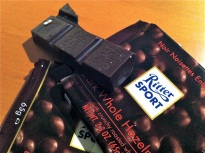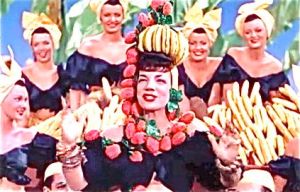I’m not a big consumer of the world’s most popular chocolate and hazelnut spread – preferring solid goodness like Baci or Ritter Sport, but I’m concerned about the future of NUTELLA and its devotees.
This timeline shows recent disturbing facts. Perhaps the beginning of No-tella?
1946 – Italian pastry maker Pietro Ferrero creates a solid chocolate loaf, adding locally grown hazelnuts as an extender due to the short supply of cocoa post World War 11. Children decide it’s a great breakfast treat with bread.
1951 – Now a cream consistency, Supercrema Gianduja is a big hit with children when shopkeepers encourage them to visit their stores bearing slices of bread to be topped with the spread. This becomes known as ‘The Smearing’.
1964 – Re-branded as ‘Nutella’ (pronounced ‘Nootella’) by the founder’s son Michele Ferrero, the spread spreads outside Italy, becoming a favourite with French and Spanish children. My parents however offer me a chocolate bar in a buttered sandwich.
1973 – The Italian film Bread and Chocolate is released. The bittersweet story about an Italian immigrant seeking work in Switzerland includes an outdoor scene where main protagonist Nino Manfredi bites into a bread roll filled with a chocolate bar. The crunching noise is so loud it stops the scene’s string quartet mid sonata.
1978 – Manufacture begins in Australia at Lithgow, about 140 kms from Sydney.
1983 – I discover Nutella and cream cheese sandwiches while studying in Florence.
2007 – Chocolate/hazelnut spread aficionado invents ‘World Nutella Day’ on 5 February.
2013 – Chocolate/hazelnut spread aficionado receives a cease-and-desist order from Ferrero-Rocher who claims their permission was not sought to officially celebrate the spread globally. Over 46,000 social media followers express outrage.
2014 – Nutella®, now available in approximately 160 countries, turns 50.
2014 – Unseasonal weather in Turkey, the world’s leading hazelnut exporter, creates a global shortage. My idea (in a previous post) of combining smashed sugared almonds with chocolate to make almond bark seems inspired.
2014 – Warnings issued of a future global cocoa crisis due to crop failure, disease and adding chocolate to EVERYTHING including gin, vodka and potato crisps.
2015 – Michele Ferrero – owner of the Nutella empire and the richest man in Italy – dies aged 89, with rumours his son is not so interested in the business and takeovers could follow.
2015 – French court bans parents from naming their baby daughters “Nutella” after judge rules “it’s not in the best interest of a child because of the risk of abuse.”
2015 – A friend (let’s call him Gus) announces he’s giving up Nutella because of the nasties it contains, including palm oil, vanillin (MSG) and soy lecithin.
2015 – I hear about a healthy, organic alternative called Nocciolata but it’s not available in Australia. Still wanting a sugar fix, I buy a breadstick and chocolate variation instead called Nutella & GO. Close examination of ingredients list reveals breadsticks contain palm oil.
If you love Nutella but want something healthier, try David Leibovitz’s recipe. For an adults-only version, do what renowned Spanish chef Ferran Adria does – add salt and an olive oil drizzle to melted chocolate on a bread roll. Or add it to cream cheese in a toasted sandwich.
Start stockpiling now!

























